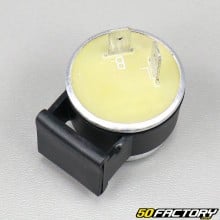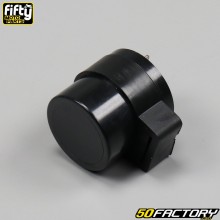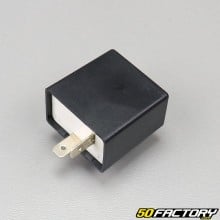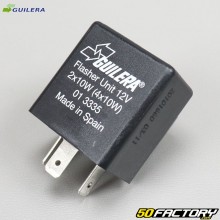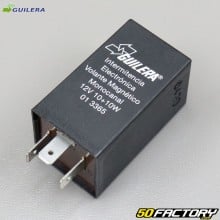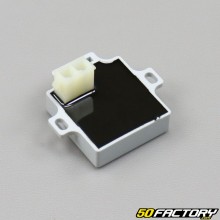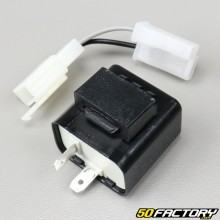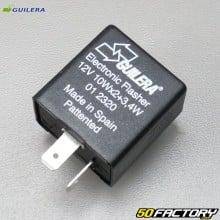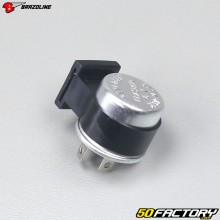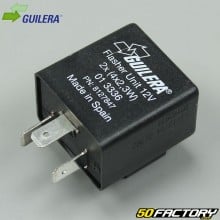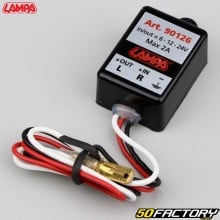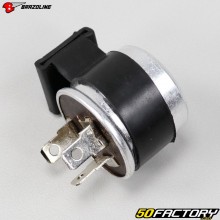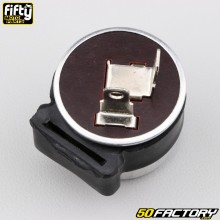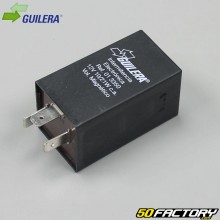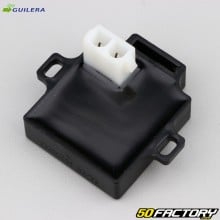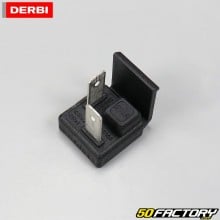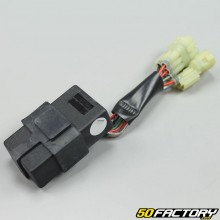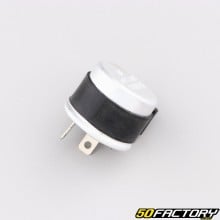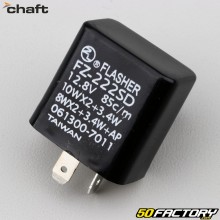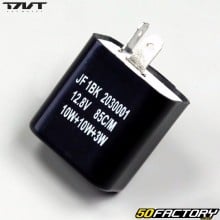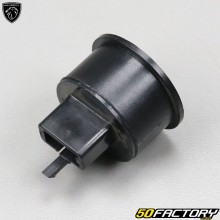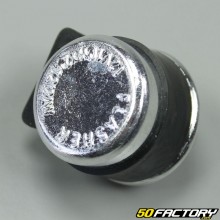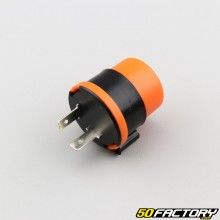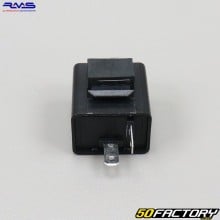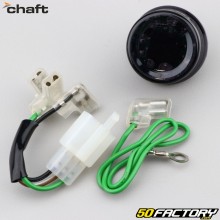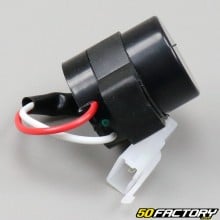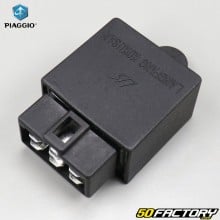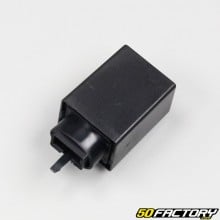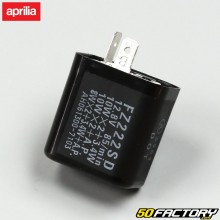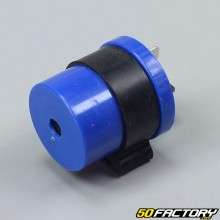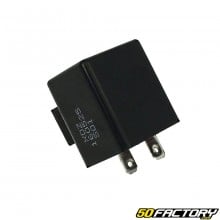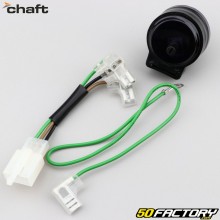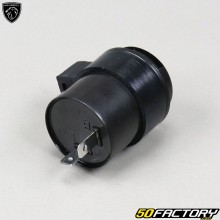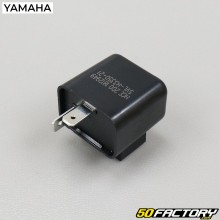 Flasher relay
Flasher relay
- IN STOCK9,50 €
- IN STOCK11,50 €
- IN STOCK9,20 €
- IN STOCK11,30 €
- IN STOCK15,00 €
- IN STOCK9,40 €
- IN STOCK22,50 €
- IN STOCK6,30 €
-
-
- STOCK EXHAUSTED13,00 €
- IN STOCK8,20 €
-
- IN STOCK11,50 €
- STOCK EXHAUSTED13,00 €
- IN STOCK7,80 €
- IN STOCK13,90 €
- IN STOCK15,80 €
-
- IN STOCK21,50 €
- IN STOCK53,50 €
- IN STOCK4,80 €
- IN STOCK19,90 €
- IN STOCK15,90 €
- IN STOCK39,50 €
- IN STOCK35,80 €
- IN STOCK5,80 €
- STOCK EXHAUSTED9,90 €
- STOCK EXHAUSTED4,50 €
- IN STOCK7,60 €
- IN STOCK24,90 €
- STOCK EXHAUSTED4,50 €
- IN STOCK36,70 €
- IN STOCK25,40 €
- IN STOCK17,50 €
- IN STOCK5,80 €
- IN STOCK8,10 €
- IN STOCK29,80 €
- IN STOCK12,70 €
-
- STOCK EXHAUSTED13,50 €
- IN STOCK11,80 €
Understand how the flashing unit works
In the universal language of driving, turn signals play a vital role in signaling our intention to change direction to other road users. This is where the flashing center, an essential component for the proper functioning of these vital indicators. But what exactly is this little device and how does it work? To fully understand its role, it is important to familiarize yourself with its internal functioning and its various specificities.
What is this device?
The flasher unit, also called a flasher relay, is an electro-mechanical or electronic device designed to flash the direction indicators (or flashing lights) of your vehicle. Every time you activate the indicators of your motorcycle, quad, scooter or any other type of vehicle, you are actually using the flashing unit. It is an essential component that ensures visual communication with other road users, contributing to safer and smoother driving.
Role and principle of operation
The main task of the flasher unit is to regulate the electrical current to the flashing lights and make them flash at a set frequency, usually about once par second. It acts as a sort of switch that quickly opens and closes the turn signal circuit to create the flashing effect. As a result, it is the beating heart of your signaling system, guaranteeing precise and constant regulation of flashing, essential for safe driving.
Importance for road safety
Understanding how the flashing unit works is a key step in understanding its importance in the context of road safety. By enabling effective and clear communication of your driving intentions, it helps reduce the risk of collision and contributes to safer driving for all road users.
Please note that motorcycle and scooter indicators are an essential safety element governed byar l'article R313-14 of the Highway Code.
The other textual source on this subject is the Council Directive 93 / 92 / EEC, of October 29, 1993, relating to the installation of lighting and light signaling devices on two-, three- and four-wheel motor vehicles.
Varieties of this signaling device
6v version
6 volt flasher units are typically found on older vehicles and some small motorcycles, bicycles and scooters. They are designed for lower voltage electrical systems, but they offer the same key functionality of controlling the flash frequency of the direction indicators.
12v model
The 12 volt model is the most commonly used version for cars, motorcycles, scooters and mopeds. Designed to operate with a 12-volt electrical system, this type of flasher unit is generally very reliable and durable. It is ideal for vehicles that require a constant and regular flashing frequency, providing effective road signaling.
2-pin, 3-pin, and 4-pin options
Flasher units can have 2, 3 or 4 pins, depending on their design. The choice of version depends on the wiring layout of your vehicle. Remember to check your vehicle manual or consult a professional before making your choice. Each of these options has its own particularities in terms of connection, power supply and turn signal control.
Electronic type
Electronic models are much more modern. Unlike their electromechanical counterparts, these versions use electronic components to perform the task of flashing the lights. They are more reliable, more durable and can even allow customization of the blink frequency. These models are also more resistant to voltage fluctuations, ensuring consistent flashing.
Specific model for LED
LED (light-emitting diode) flashing lights offer many benefits, including better visibility, longer life and lower energy consumption. However, due to their low power consumption, LEDs can cause malfunctions in a standard flasher unit. Specific models for LED are therefore necessary to avoid these problems. They are designed to effectively control the flashing of LEDs, thus guaranteeing optimal road signaling.
Understand the importance of choice
Understanding the different varieties of flashing units and their characteristics is essential to making the right choice. Whether you need a model for an older or modern vehicle, for an LED or standard system, there is an option that will meet your needs. A wise choice will not only ensure that your turn signals work properly, but will also contribute to your safety on the road.
Selection of the best option
Selection criteria
To choose the best flashing unit for your vehicle, you must take into account several criteria. Besides the type of your vehicle, the voltage of the electrical system and the type of lamps used for the turn signals, you must also consider the quality, reliability, durability and cost of the flasher unit itself. It is also essential to consider the brand of the part, opt for manufacturers recognized for their commitment to quality and performance.
Adaptability to the vehicle
It is essential to ensure that the flasher unit is compatible with your vehicle. Be sure to check the model and type of your vehicle, as well as the type of turn signals used, before making your choice. Also don't forget to check the compatibility of the control unit with your electrical system. Improper matching can cause performance issues or even damage your vehicle.
Consider the total cost
Finally, don't forget to take into account the total cost, which includes not only the price of the flasher unit itself, but also possible installation and maintenance costs. A quality flasher unit may require a larger initial investment, but will save you money in the long run by minimizing breakdowns and repairs.
Installation procedure
Preparing for installation
Before starting the installation of your new flashing unit, it is essential to prepare yourself well. Make sure you have all the tools needed for installation on hand. This may include a screwdriver, pliers, and depending on your vehicle model, a tire iron or other specific tools. Additionally, it would be beneficial to have a well-lit working environment to avoid any errors or accidents.
Installation steps
Installing a flasher unit is generally a simple process that can be accomplished with a few basic tools. However, it is important to strictly follow the instructions provided par manufacturer to prevent damage to your vehicle. Make sure you understand each step before you begin.
Precautions to take
As with any intervention on a vehicle's electrical system, be sure to disconnect the battery before beginning installation to avoid any risk of short circuit. Also remember to wear insulated gloves and use insulated tools. In addition, it is advisable to check the proper functioning of your new flashing unit before finalizing the installation.
After installation
Once installation is complete, it is important to perform a safety check. Test the proper operation of your turn signals in all possible conditions to ensure that everything is working correctly and that your safety is guaranteed.
When to replace the device
Signs that change is needed
There are several signs that indicate that it is time to change your flashing unit. These signs may include turn signals that work intermittently, flash too quickly or too slowly, or not work at all. Additionally, if you notice that your turn signals do not turn on immediately after flipping the switch or turn off for no apparent reason, this may also indicate a problem with the flasher unit.
Consequences of a defective device
In addition to being annoying, a faulty flashing device can also be dangerous. Non-functional or poorly functioning turn signals can cause confusion on the road and increase the risk of accidents. Par elsewhere, in the event of a road check, the absence of functional indicators could result in a fine, car they are mandatory for road safety.
Importance of regular maintenance
It is important to carry out regular checks of your flashing unit to ensure that it is functioning properly. This makes it possible to quickly detect any malfunction and intervene accordingly, thus ensuring optimal safety while traveling. Regular maintenance also increases the lifespan of your flashing unit, and par therefore, save money in the long term.
Advantages and disadvantages of different types
Here we will evaluate the pros and cons of each type of flasher unit. While electromechanical models are generally cheaper and more readily available, they can be less reliable and more likely to break down. Electronic models, on the other hand, offer better reliability and durability, but can be more expensive and more difficult to install.
Electronic flasher relays
Electronic flasher units offer constant performance independent of load, making them particularly suitable for vehicles equipped with LED lamps. In addition, some electronic models allow you to adjust the flashing frequency, a feature appreciated byar some users. However, these advantages may be counterbalanced par a higher purchasing cost.
Electromechanical flashing units
Electromechanical power stations have the advantage of often being less expensive. Their simple, robust design also makes them less likely to suffer electronic failures. However, their performance can vary with load, which can result in an irregular flashing frequency, particularly with low-power bulbs like LEDs.
Where to buy a quality model?
Whether you opt for an electronic device, an LED version or a standard model, it is crucial to choose a trusted brand to ensure the reliability and longevity of your purchase. Choose reputable suppliers for the purchase of this essential element of your vehicle. This not only ensures a quality product, but also efficient after-sales service and assistance when needed.
Additionally, it is important to note that high-quality models often come with a warranty. This is an added benefit that brings peace of mind, itar you know you can get a repair or replacement if needed. Finally, don't forget to check reviews from previous customers to get an idea of the level of satisfaction with the product and service provided.
Conclusion: The importance of the flashing unit for road safety
In conclusion, regardless of the type of vehicle you drive, the flasher control unit plays a crucial role in road safety by allowing your turn signals to work properly. Although it is a small device, its role in preventing accidents and improving visibility on the road cannot be overlooked.
In fact, a reliable flashing unit ensures that your intentions to change direction are clearly signaled to other road users, thereby reducing the risk of collisions. It also contributes to the efficiency of your travels, by ensuring optimal operation of your signaling system.
This is why choosing a quality flashing unit is a decision that goes well beyond simple driving comfort. It’s an investment in your safety and that of others. It is a commitment to responsible and respectful conduct. This is why it is imperative to use your best judgment when purchasing this essential piece. Take the time to choose carefully,ar your safety and that of others depends on it.

























